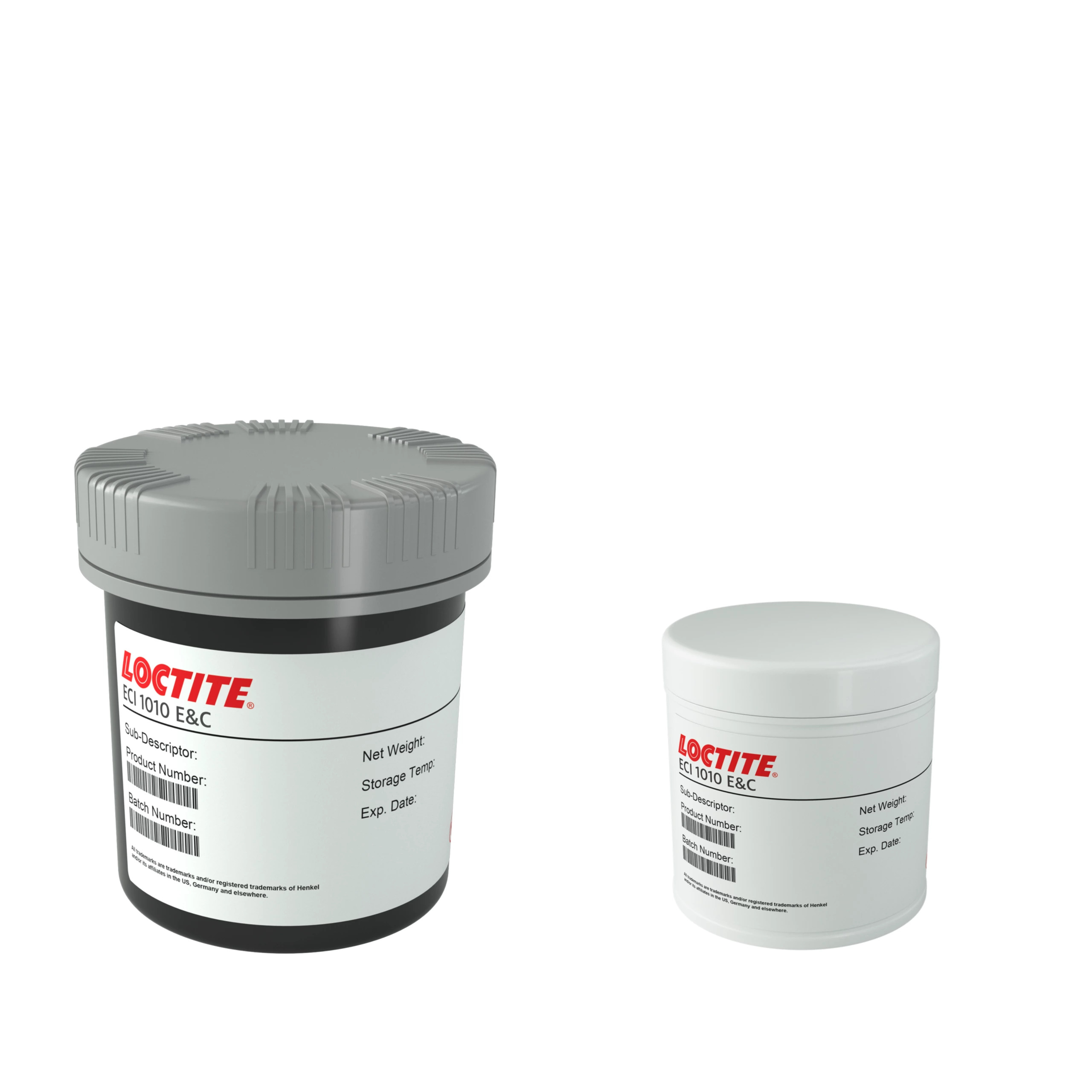LOCTITE ECI1010 E&C
- Flexible
- High conductivity
- PET substrates
Product Description
LOCTITE ECI 1010 E&C conductive silver ink is screen and flexo printable. The silver pigment is partly sintering, resulting in optimum sheet resistance for excellent current carrying capacity. Its maximum operating temperature is 100°C.
LOCTITE ECI 1010 E&C is a flexible, thermoplastic, conductive silver ink (±7 mOhm/sq/25um sheet resistance) that can be used in SmartCard applications, flexible circuits, printed circuit boards, membrane switches and RFID. It has been successfully used on PET substrates. This material is flexible in order to maintain high conductivity after card bending. If you want even higher conductivity with a more rigid structure you can consider ECI 1011.
LOCTITE ECI 1010 E&C can be dried using forced air or infrared systems. Higher temperatures for longer time exposure will improve the performance. Care should be taken with infrared. Too much energy can destroy the coating. Design drying rates for the maximum the substrate and production speeds can tolerate.
Drying Cycle
- 15 minutes @ 120°C or
- 2minutes @ 150°C
Technical Specifications
| General Properties | |||||
| Density (g) | 2.1 g/cm3 | ||||
| Solids | 62 % | ||||
| |||||
| Physical Properties | |||||
| Thixotropic index Thixotropic index Thixotropic Index is a ratio of a material s viscosity at two different speeds in Ambient temperature, generally different by a factor of ten. A thixotropic material s viscosity will decrease as agitation or pressure is increased. It indicates the capability of a material to hold its shape. Mayonnaise is a great example of this. It holds its shape very well, but when a shear stress is applied, the material easily spreads. It helps in choosing a material in accordance to the application, dispense method and viscosity of a material. | 1.9 | ||||
| Viscosity Viscosity Viscosity is a measurement of a fluid’s resistance to flow. Viscosity is commonly measured in centiPoise (cP). One cP is defined as the viscosity of water and all other viscosities are derived from this base. MPa is another common unit with a 1:1 conversion to cP. A product like honey would have a much higher viscosity -around 10,000 cPs- compared to water. As a result, honey would flow much slower out of a tipped glass than water would. The viscosity of a material can be decreased with an increase in temperature in order to better suit an application | 9,000 mPa.s | ||||
Additional Information

Henkel’s expertise in conductive ink formulation is lending new levels of function and efficiency to a process known as pad printing. Pad printing has traditionally been carried out with non-conductive inks or for marking applications, but new technology and robust materials are extending the benefits of pad printing to achieve delivery of electrical, current carrying capability onto 3-D substrates. With the pad printing process, indirect gravure printing with a silicone pad is used to transfer a 2-D image onto 3-D objects with varied shapes such as cylinders, spheres and angles, among others.
Henkel’s LOCTITE ECI 1010 E&C and LOCTITE ECI 1011 E&C are highly-conductive, printable silver inks that are used in pad printing for multiple applications including automotive car lenses, printed heaters, white goods, medical devices and keyboards.

Pad printing process for electrically conductive inks



